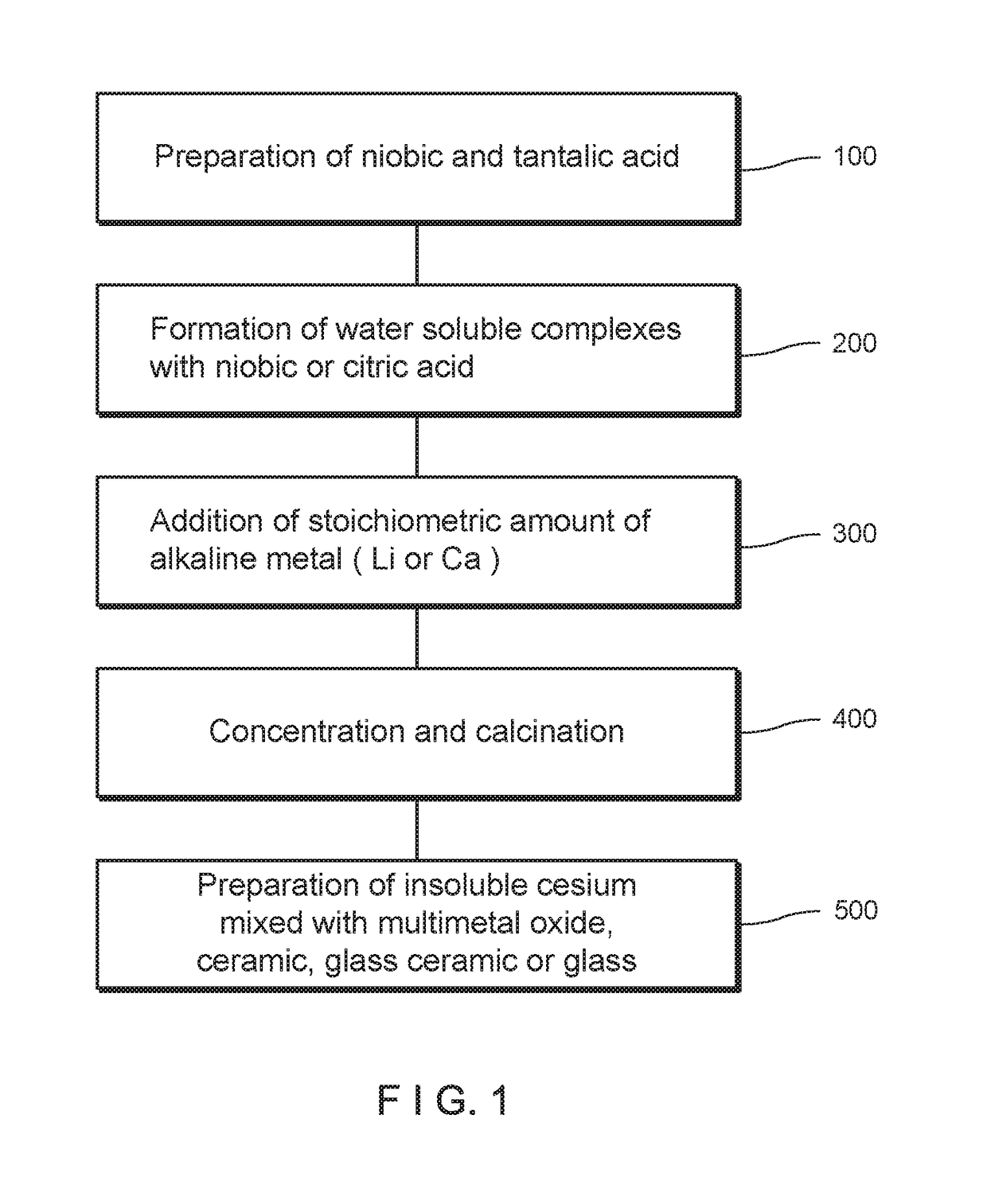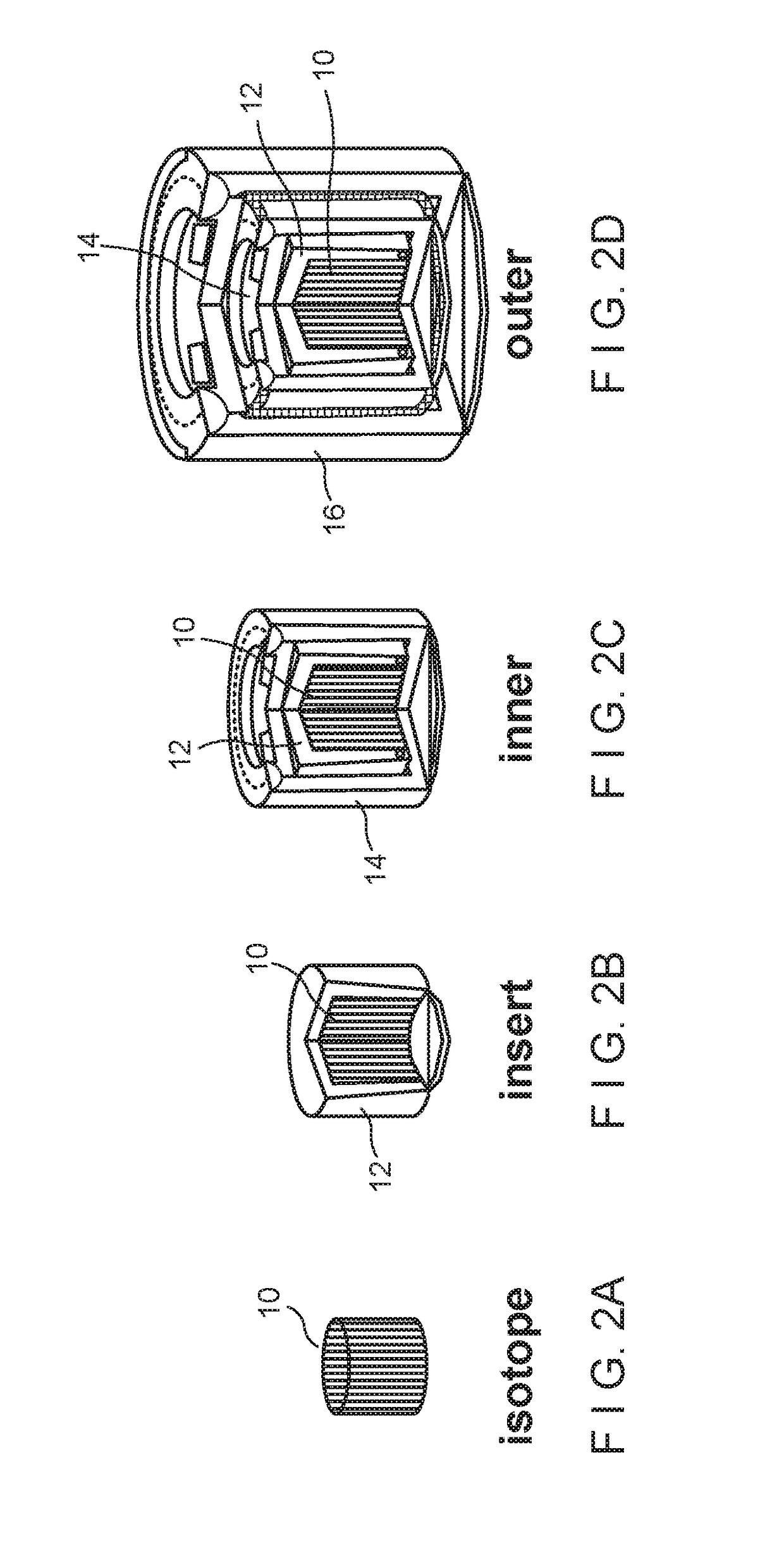Insoluble cesium glass
a technology of cesium glass and insoluble cesium glass, which is applied in the direction of radioactive sources, nuclear engineering solutions, nuclear engineering, etc., can solve the problems of difficult radiological challenges and none are commercially available, and achieve the effects of reducing water solubility, improving fabrication methods, and increasing radiological safety
- Summary
- Abstract
- Description
- Claims
- Application Information
AI Technical Summary
Benefits of technology
Problems solved by technology
Method used
Image
Examples
Embodiment Construction
[0022]Various methods are available for the production of components for insoluble cesium glass ceramic or other similar materials such as low solubility refractory material or pressed powder compact. In all of the methods described herein, cesium-137 compounds are envisioned to be used for the production of commercial products, while cesium-133 (i.e., naturally occurring cesium) compounds may be used to confirm the chemical protocols while reducing or eliminating the radiological risk. Additionally, while the use of nobium and tantalum is disclosed in these methods, it is envisioned that these methods may be applicable to other five-valent metals, such as, but not limited to, vanadium or combinations of five-valent metals.
Summary of First Method—Malate Complex Method
[0023]The procedure typically begins with addition of Nb2O5 oxide pentahydrate (Nb2O5.5H2O) or, an equivalent compound, niobic acid (2×(HNbO3.2H2O)) (in some instances, particularly while establishing chemical protocols...
PUM
 Login to View More
Login to View More Abstract
Description
Claims
Application Information
 Login to View More
Login to View More - R&D
- Intellectual Property
- Life Sciences
- Materials
- Tech Scout
- Unparalleled Data Quality
- Higher Quality Content
- 60% Fewer Hallucinations
Browse by: Latest US Patents, China's latest patents, Technical Efficacy Thesaurus, Application Domain, Technology Topic, Popular Technical Reports.
© 2025 PatSnap. All rights reserved.Legal|Privacy policy|Modern Slavery Act Transparency Statement|Sitemap|About US| Contact US: help@patsnap.com


